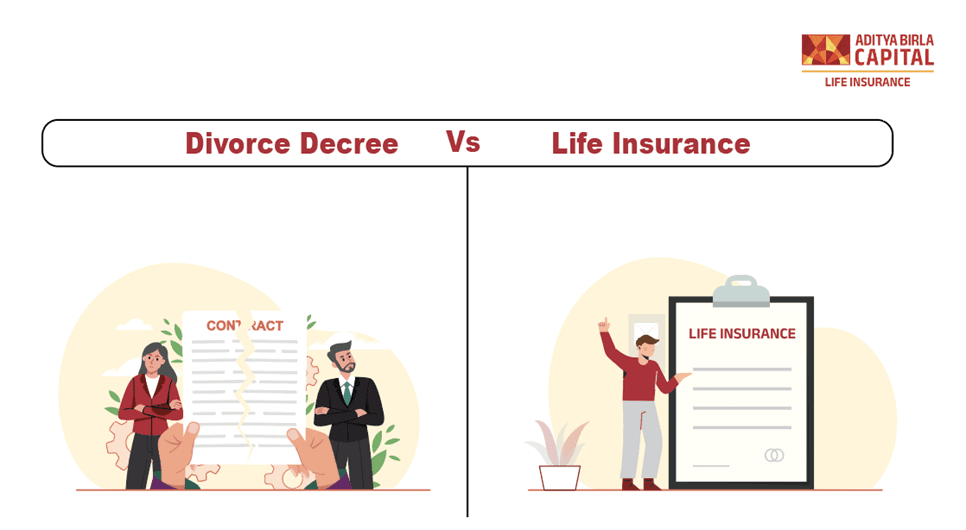Aditya Birla Sun Life Insurance Company Limited
Types Of Life Insurance Payouts You Can Get

Plan Smarter, Live Better!

Thank you for your details. We will reach out to you shortly.

Currently we are facing some issue. Please try after sometime.


- Table of Contents
Before you buy a life insurance plan, one of the first things you need to look at is the kind of benefits that each plan offers. This could be quite a challenge if you’re buying your first life cover, because there are different types of payouts that you need to be aware of when you’re shopping for life insurance.
Broadly speaking, there are two main kinds of payouts.
-
Death benefits
-
Maturity benefits
Let’s begin by taking a look at these two broad categories of payouts.
Death Benefit Payouts
A life insurance cover is valid for a specific period. This is known as the policy term. Now, if the policyholder passes away during the policy term, the insurer pays out the sum assured under the policy, to the policyholder’s nominee.
This sum is known as the death benefit, since it is paid out on the policyholder’s death. And it is a predetermined sum that the policyholder will be aware of at the time of purchasing the plan.
All life insurance plans offer death benefits. In fact, this is the primary benefit of any life cover. By paying out death benefits to the policyholder’s family, the life cover ensures that the surviving family members are financially protected, even though they may have lost the sole or the main earning member in the family.
Maturity Benefit Payouts
What happens if the policyholder survives the policy term? In this case, the life insurance plan is said to have matured. And at this juncture, most life insurance policies pay out maturity benefits to the policyholder.
The maturity payout varies from one plan to another. It may be quantified upfront in some plans, while in others, it may be a variable amount that is determined at the end of the policy term.
The maturity amount generally includes bonus payments and any returns from the investment made by the policyholder. However, do keep in mind that not all life insurance plans offer maturity benefits. More specifically, savings plans and investment plans offer maturity benefits, but term insurance plans - which are pure protection plans - offer only death benefits. Because of this, term plans are the most affordable kind of life insurance in the market.
Death Benefits Vs. Maturity Benefits: How Do They Help?
Death benefits form the core of life insurance. This is because the whole point of purchasing a life cover is to make sure that in case the sole or the main breadwinner of a family passes away, the surviving members are not financially crippled. And all life insurance plans offer this benefit.
But maturity benefits, as you’ve seen above, are not available in all life insurance policies. So, how do you decide whether to opt for a term plan or a plan that gives you maturity benefits? Here are some pointers that can help you.
A term plan may be ideal for you if:
-
You are primarily interested in securing your family’s future in case something untoward happens
-
You want an affordable life cover
-
You are looking for additional life coverage - over and above another life insurance plan that you already have
-
You already have a lot of other investments and assets for your future goals
-
On the other hand, you will need a life insurance plan with maturity benefits if: You want to save up for your future life goals
-
You can afford to pay higher premiums
-
You want to save up for retirement
-
You are looking for more than a pure life cover
Now, if you opt for a plan that gives you maturity benefits, you will also need to choose the type of maturity payouts from the choices available, if any.
Types Of Maturity Payouts
At the end of the policy term, you have a huge sum waiting to be paid out to you. But what if you do not want to receive all of it once? What if you would prefer periodic payments instead? Fortunately, many life insurance plans give you the freedom to choose how you receive the maturity benefits.
And depending on the way in which the maturity benefits are paid, life insurance plans offer the following types of maturity payout options.
-
Lump sum payout
Here, the insurer pays out the entire maturity benefit as one lump sum payment. You can then use this money to meet any major life goals you may have at that life stage, like paying off debts or meeting the costs of your child’s higher education. Or, you can choose to invest it in another scheme or asset. -
Periodic payout
In this case, the maturity benefits are paid out to you in installments for a given period. You can choose to receive these periodic payouts on a monthly, quarterly, semi-annual or annual basis, depending on what the plan you choose offers. This option is ideal for people who are looking for a source of income to rely on. -
Lump sum + periodic payout
In some life insurance plans, you have the option to receive one portion of your maturity amount as a lump sum payout. The remaining portion is paid out to you periodically, as a source of additional income or replacement income.
Annuity Payouts
Aside from death benefit and maturity benefit payouts, there’s another kind of payout that you need to be aware of - annuity payouts. These are specific to retirement plans. The annuity payouts are made to the policyholder after they have made a certain number of premium payments. In some cases, annuity payouts can even start right after the policyholder makes a single lump sum payout. It all depends on the terms and conditions of the life insurance plan chosen.
Annuity payments can be of two main kinds.
-
Immediate annuity
Immediate annuity payouts start right after you’ve made the specified number or amount of premium payments necessary. These payments can continue for a specific period or for your lifetime.
Deferred annuity payouts begin after a particular period of term. In deferred annuity plans, you need to pay the specified premium amounts first. Then, you wait for a particular predetermined period, after which you will start receiving the annuity payouts.
Rider Payouts
Life insurance plans also allow you to enhance the basic cover offered with additional riders!. Depending on the kind of rider! you choose, you or your nominees will also be entitled to some additional payouts. Here’s how the payouts in the most common riders! work.
-
Accidental death and disability rider
An additional sum is paid out to the policyholder in case of any permanent partial or total disability due to an accident. In case the policyholder passes away due to an accident, the rider! sum assured is paid out to the nominee. -
Critical illness rider
This rider! offers a lump sum amount to the policyholder if they are diagnosed with any of the critical illnesses specified in the rider!. -
Surgical care rider
With this rider!, policyholders get a payout to cover the costs of any specified surgeries. -
Hospital care rider
This rider! offers the policyholder a daily cash benefit in case of hospitalization. Generally, there is a minimum hospitalization period specified. If the policyholder is hospitalized for that period or longer, the benefits under this rider! are paid out. -
Waiver of premium rider
In case the policyholder suffers an accident or any illness that leaves them with a disability, or in case they are diagnosed with a critical illness, it may not be possible for the policyholder to continue working and earning for their family. Under such circumstances, this rider! ensures that all future premiums are waived, so the overall financial burden on the policyholder and their family is reduced.
Conclusion
That sums up the different kinds of payouts that your life insurance policy can give you. Before you make your purchase, ensure that you are clear about the benefits your plan offers. That way, you can check if the payouts will satisfy your future financial requirements.
DO BENEFICIARIES NEED TO PAY TAXES ON LIFE INSURANCE PAYOUTS?
Life insurance payouts are extremely beneficial. But have you ever wondered if they come with the added burden of taxes3? Our blog on this subject answers these questions.
WORRIED YOUR INCOME MAY NOT BE ENOUGH TO FULFILL YOUR GOALS? INSURANCE PAYOUTS CAN HELP.
With the costs of living rising without a break, it’s only natural to consider getting an extra source of income. The ABSLI SecurePlus Plan makes this possible, with assured income that gives you the financial stability you are looking for.
And there’s a bonus too. The plan comes with an inbuilt accidental death benefit!
Thank you for your details. We will reach out shortly.
Thanks for reaching out. Currently we are facing some issue.
Buy ₹1 Crore Term Insurance at Just ₹465/month*
ABSLI Super Term Plan
Term plan designed for salaried individual.
3 Plan Options
Health Management Service Worth ₹46000
100% return of premium
Life Cover
₹1 crore
Premium:
₹465/month*
Most Popular Calculator
Buy ₹1 Crore Term Insurance at just @ ₹576/month*
!Riders offer additional benefits that are not included in the base policy at a nominal additional premium. There are exclusions attached to the riders. Please refer prospectus for more details
3Tax benefits are subject to changes in tax laws. Kindly consult your financial advisor for more details.
ABSLI Secure Plus Plan (UIN: 109N102V03) is a non-participating traditional insurance plan.
ADV/8/21-22/813







